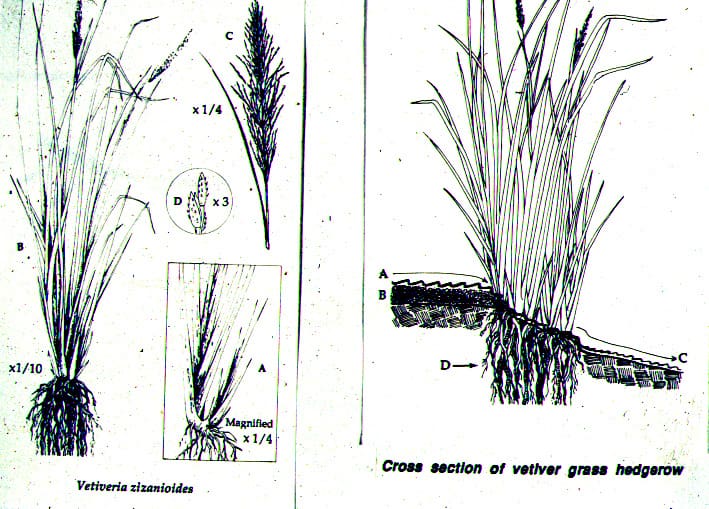Vetiver, formerly known as (Vetiveria zizanioides L. Nash), now reclassified as (Chrysopogon zizanioides L.

Roberty), is a fast-growing perennial grass plant with an extensive, dense and deep root system. In tropical environments, it has been shown to survive for up to 100 years. Since the vetiver root system does not have lateral roots (stolons nor rhizomes) it cannot move laterally. It cannot produce fertile seed, it does not spread naturally and is therefore not invasive. When planted close together it forms a dense narrow hedge. Its leaves and stems will grow up to 3 meter tall and its roots will grow downwards up to 6 meters. The roots have a tensile strength of 1/6 that of mild steel, and when planted in hedges will increase soil sheer strength by up to 45%.
Underneath each hedgerow an interlocking and dense root matrix creates vast, dense underground walls that not only reinforces soil structure but will stabilize any associated infrastructure. The plant has a wide range of adaption and will tolerate soil pH from 3 to 11, temperatures from -15 to +55 degrees C and is extremely drought proof, and yet can survive complete submergence in water for at least 3 months. It is saline tolerant, tolerant to most heavy metals, and to all herbicides except for glyphosate.
Introductory Photo Essay (pdf download kb 864)